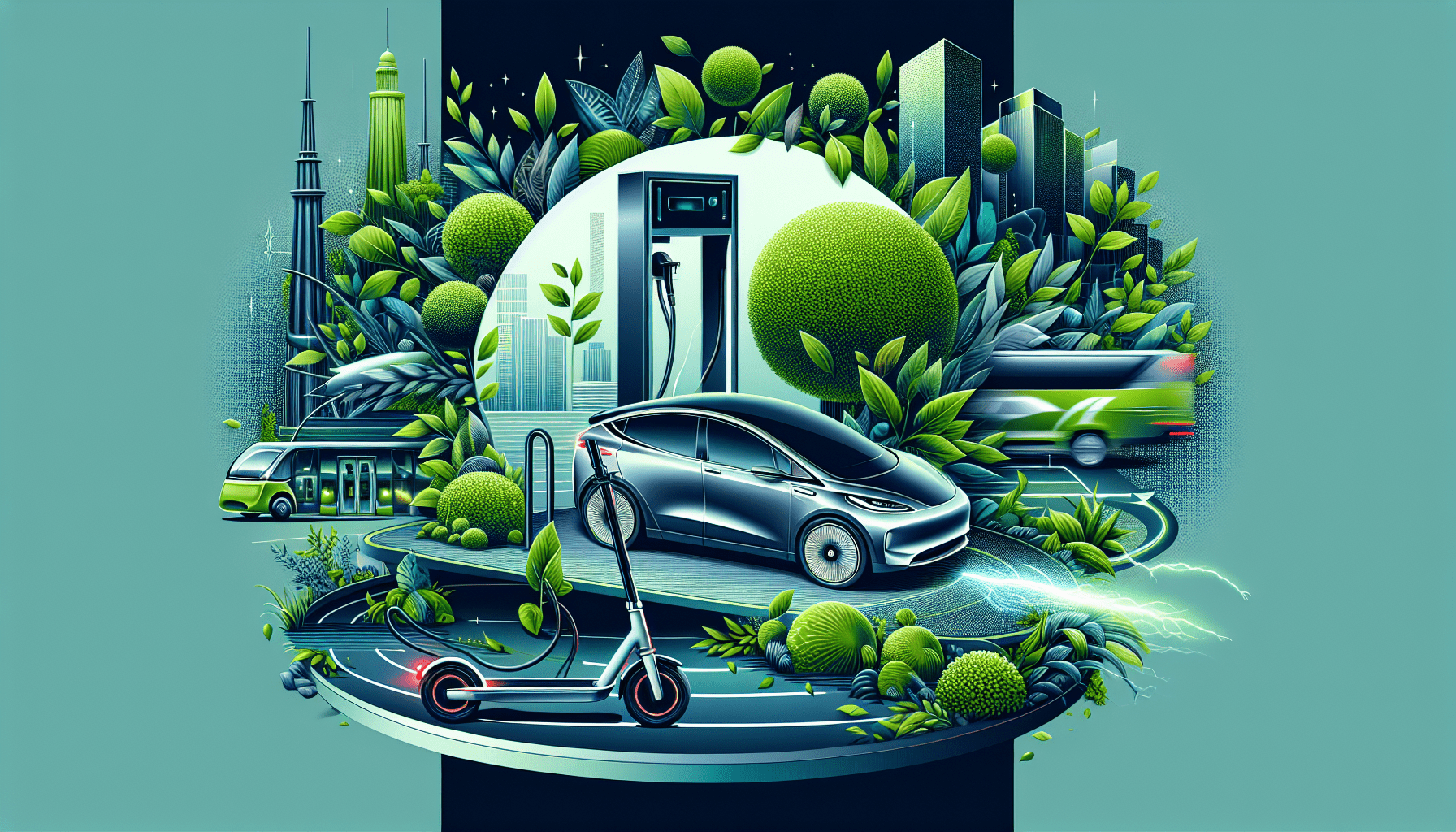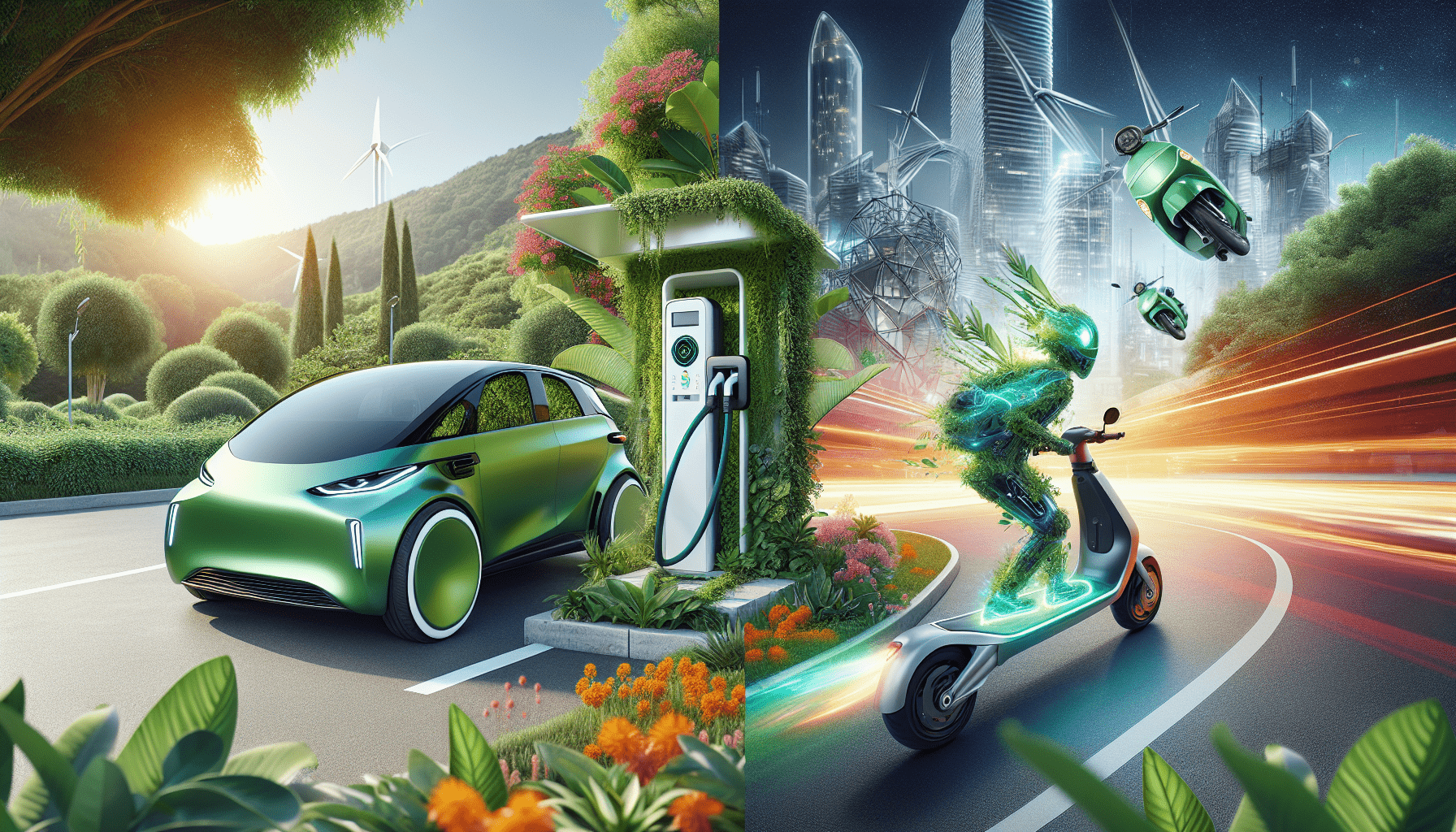In our rapidly changing world, finding sustainable and eco-friendly modes of transportation has never been more critical. The push for greener alternatives has spurred a wave of innovation, from electric vehicles and solar-powered bikes to advancements in public transportation and ridesharing technologies. These breakthroughs not only aim to reduce our carbon footprint but also aspire to make our daily commutes more efficient and enjoyable. In “What Are The Latest Innovations In Eco-friendly Transportation?” we explore the cutting-edge developments that are paving the way for a cleaner, greener future. Have you ever wondered what the latest innovations in eco-friendly transportation are? With the growing awareness of climate change and the urgent need to reduce greenhouse gas emissions, innovations in sustainable transportation have never been more important. Let’s dive into some of the most exciting developments that are leading the way to a greener future.
Electric Vehicles (EVs)
Battery Technology
One of the most significant breakthroughs in eco-friendly transportation is the advancement of battery technology. Traditional lithium-ion batteries are being replaced by more efficient, safer, and longer-lasting alternatives like solid-state batteries. These new batteries not only extend the range of electric vehicles but also reduce charging time.
Charging Infrastructure
As the popularity of electric vehicles grows, so does the need for fast and reliable charging infrastructure. Innovations like ultra-fast chargers, wireless charging pads, and solar-powered charging stations are making it easier and more convenient to keep our electric cars charged and ready to go.
Vehicle-to-Grid (V2G) Technology
Vehicle-to-grid technology allows electric vehicles to not only draw power from the grid but also send energy back when it’s needed. This creates a two-way street where EVs act as mobile energy storage units, helping to balance grid demand and reduce energy waste.
Hydrogen Fuel Cell Vehicles
Fuel cell advancements
While electric vehicles get a lot of attention, hydrogen fuel cell vehicles are also making strides. These vehicles use hydrogen gas to produce electricity, emitting only water vapor as a byproduct. Recent advancements in fuel cell technology have led to more efficient and affordable hydrogen cars.
Hydrogen Infrastructure
The viability of hydrogen fuel cell vehicles relies heavily on the availability of hydrogen refueling stations. Governments and private companies are investing in expanding hydrogen infrastructure, making it easier to find a refueling station while on the go.

Public Transportation Innovations
Electric Buses
Electric buses are transforming public transportation by reducing emissions and improving air quality in our cities. Cities worldwide are investing in all-electric bus fleets that offer quiet, zero-emission rides.
Autonomous Public Transit
Self-driving technology isn’t just for private cars. Autonomous buses and shuttles are being tested and implemented in various cities. These smart vehicles can optimize routes, reduce traffic congestion, and lower overall emissions.
Smart Ticketing Systems
Contactless payment systems and mobile ticketing apps are making public transportation more user-friendly and efficient. These innovations not only save time but also reduce the need for paper tickets, contributing to a more sustainable transit system.
Bicycles and E-scooters
Electric Bicycles
Electric bicycles are becoming an increasingly popular option for eco-friendly transportation. They offer the convenience of powered travel without the emissions, making them perfect for short commutes and leisurely rides.
Shared Mobility Programs
Bike and scooter-sharing programs are popping up in cities worldwide, offering an affordable and convenient way to get around without owning a vehicle. These programs not only reduce traffic congestion but also decrease carbon footprints.

Rail Innovations
High-Speed Rail
High-speed rail systems are being developed and expanded in many regions, providing fast and efficient alternatives to air and car travel. These electric trains offer rapid transit options with significantly lower emissions.
Maglev Technology
Maglev (magnetic levitation) trains are an exciting innovation in rail transport. These trains use powerful magnets to levitate above the tracks, reducing friction and allowing for extremely high speeds and improved energy efficiency.
Maritime Transportation
Electric Ships
Shipping accounts for a significant portion of global emissions, but electric ships are poised to make a difference. Advances in battery technology are enabling the development of all-electric ships for short and medium distances.
Wind-Powered Vessels
Wind power is making a comeback in maritime transport with modern innovations like rigid sails and kite systems. These technologies use wind energy to supplement traditional engines, reducing fuel consumption and emissions.
Cleaner Fuels
For long-distance maritime travel, new cleaner fuels like biofuels and liquefied natural gas (LNG) are being explored as alternatives to heavy fuel oil. These cleaner fuels promise to reduce emissions and improve air quality.
Aviation Innovations
Electric and Hybrid-Electric Planes
While we’re still a way off from all-electric commercial airliners, small electric and hybrid-electric planes are already taking to the skies. These planes promise to revolutionize short-haul flights with lower emissions and quieter operation.
Sustainable Aviation Fuels
Sustainable aviation fuels, made from renewable sources like algae and waste oils, are gaining traction as a way to reduce the carbon footprint of air travel. These fuels can often be used in existing aircraft with little to no modifications.
Improved Aerodynamics
Innovations in aircraft design and materials are making planes more aerodynamically efficient. Lighter, more aerodynamic planes require less fuel, resulting in lower emissions and operating costs.
Urban Planning and Policies
Car-Free Zones
Many cities are creating car-free zones to reduce traffic congestion and improve air quality. These pedestrian-friendly areas prioritize walking, cycling, and public transport, encouraging residents to leave their cars at home.
Incentives and Subsidies
Governments around the world are offering incentives and subsidies to encourage the adoption of eco-friendly transportation. These can include tax breaks for electric vehicle purchases, grants for installing EV chargers, and subsidies for public transit systems.
Integrated Transport Systems
Creating integrated transport systems that seamlessly connect different modes of travel can make eco-friendly options more appealing. Coordinated schedules, unified ticketing systems, and optimized routes can reduce the dependency on personal cars.
Challenges and Future Directions
Overcoming Battery Limitations
While battery technology has come a long way, challenges remain. Research is ongoing to develop batteries with even higher energy densities, faster charging times, and longer lifespans to make electric vehicles more viable for all types of travel.
Expanding Renewable Energy Use
For eco-friendly transportation to truly make a difference, the energy used to power our vehicles needs to come from renewable sources. Continued investments in solar, wind, and other renewable energies are essential for a sustainable future.
Addressing Infrastructure Needs
Building the necessary infrastructure for electric and hydrogen vehicles, as well as for public transportation and shared mobility programs, requires significant investment and planning. Collaborations between governments, private companies, and communities are essential to create a cohesive and sustainable network.
Case Studies
Norway: A Leader in Electric Vehicles
Norway has emerged as a global leader in electric vehicle adoption. With substantial government incentives, extensive charging infrastructure, and a strong commitment to sustainability, more than half of all new cars sold in Norway are electric.
Netherlands: Biking Capital of the World
The Netherlands is known for its robust biking culture. The country has invested heavily in bike infrastructure, including dedicated bike lanes, bike parking, and bike-sharing programs, making cycling a safe and attractive mode of transport.
Japan: Pioneering High-Speed Rail
Japan’s Shinkansen, or bullet trains, have set the standard for high-speed rail travel. These electric trains are not only fast but also incredibly reliable and energy-efficient, providing a viable alternative to air travel for intercity trips.
Conclusion
Eco-friendly transportation is essential for a sustainable future. From electric vehicles and hydrogen fuel cells to public transportation innovations and bike-sharing programs, there’s an array of exciting developments paving the way. It’s crucial for us to stay informed, support these technologies, and make conscious choices to reduce our carbon footprints. By embracing these innovations, we can all contribute to a cleaner, greener planet.



